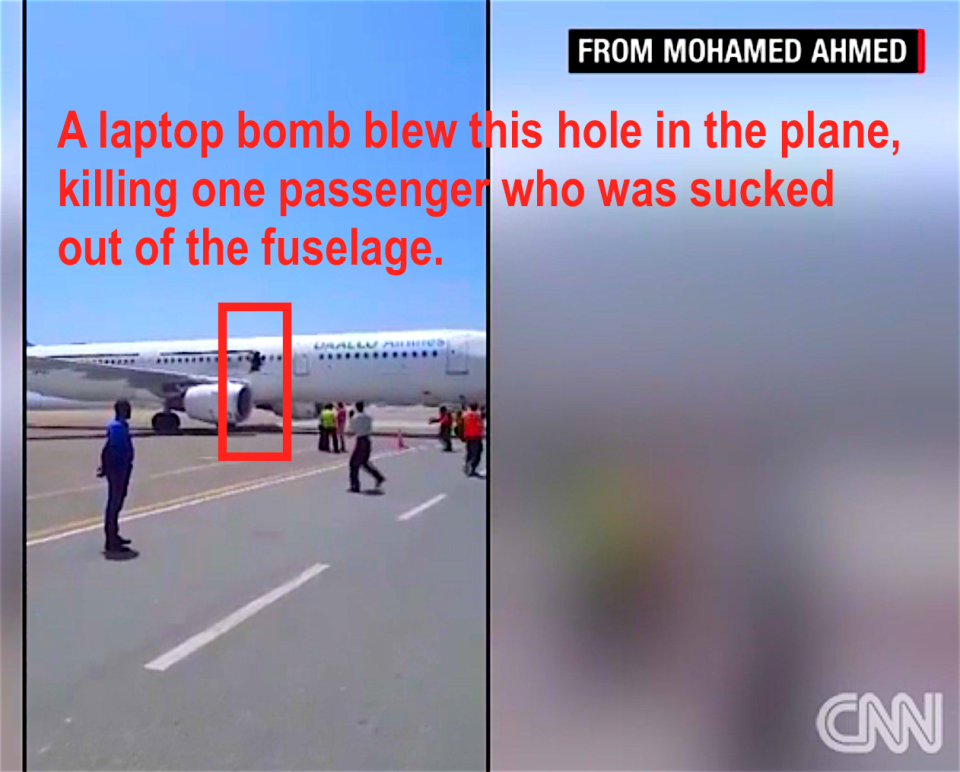Somali laptop bombing suggests grim possibility in EgyptAir crash

CNN
As Egyptian officials continue their investigation into last week's crash of EgyptAir Flight 804, security experts should look at an incident aboard a Somali jetliner that killed one passenger in February.
A laptop bomb aboard Daallo Airlines Flight 159 exploded shortly after the plane took off from Mogadishu, the Somali capital. One passenger, who was blown out of the hole in the fuselage, was killed. The plane managed to turn around and land at Mogadishu International Airport with no further casualties.
RELATED: 70 Paris airport workers were stripped of their security clearances before the Egyptair crash.
Security experts are worried that the incident means terrorists have figured out a way to create laptop bombs that can evade airport security checks, according to the Financial Times:
In a paper published on Monday, Robert Liscouski, a former senior official at the department of Homeland Security, and William McGann, who runs IMplant Sciences, which makes explosive detection equipment, highlighted the bombing in February of a Somali passenger jet.
The aircraft was forced to make an emergency landing after a bomb left a gaping hole in the side of the Airbus A321. The device, which was built into a laptop computer and claimed by al-Shabaab, the Somalian militant group, has been "a wake-up call for security agencies and those working in the field of explosive detection", they wrote, adding: "There is a high-stakes contest between terrorists developing new techniques to try to beat airport security and the security officials and technologists working to keep bombs off planes."

CNN
One of the main mysteries in the EgyptAir crash is why multiple smoke detectors went off in different areas of the plane before it went down and whether that was a symptom of catastrophic damage to the plane or whether the plane, out of control, fell into the ocean in one piece.
French investigators told the FT that the smoke alarms may have been activated even if there was no fire:
They said that monitors can be triggered by air condensing rapidly inside the aircraft following a sudden depressurisation of the aircraft, caused by a catastrophic structural failure.
A laptop bomb of the type used by the militant group al-Shabab against the Daallo jet could create that scenario.
Tweet Embed:
https://twitter.com/mims/statuses/697146811857956864
#Terror attacks on airplanes trigger #TSA adjustments https://t.co/sRogGwZmkh via @WTOP #D3159 #AirportSecurity pic.twitter.com/u1lpVl9uxf
NOW WATCH: Trump said he’s willing to do what no sitting US president has ever done
See Also:
REPORT: EgyptAir plane made 3 emergency landings in the 24 hours before it crashed
2,500 Colombian police raided a network of crack dens and found something horrifying
SEE ALSO: Here are the most crucial issues we know about so far in the Egyptair crash mystery

 Yahoo Finance
Yahoo Finance 
